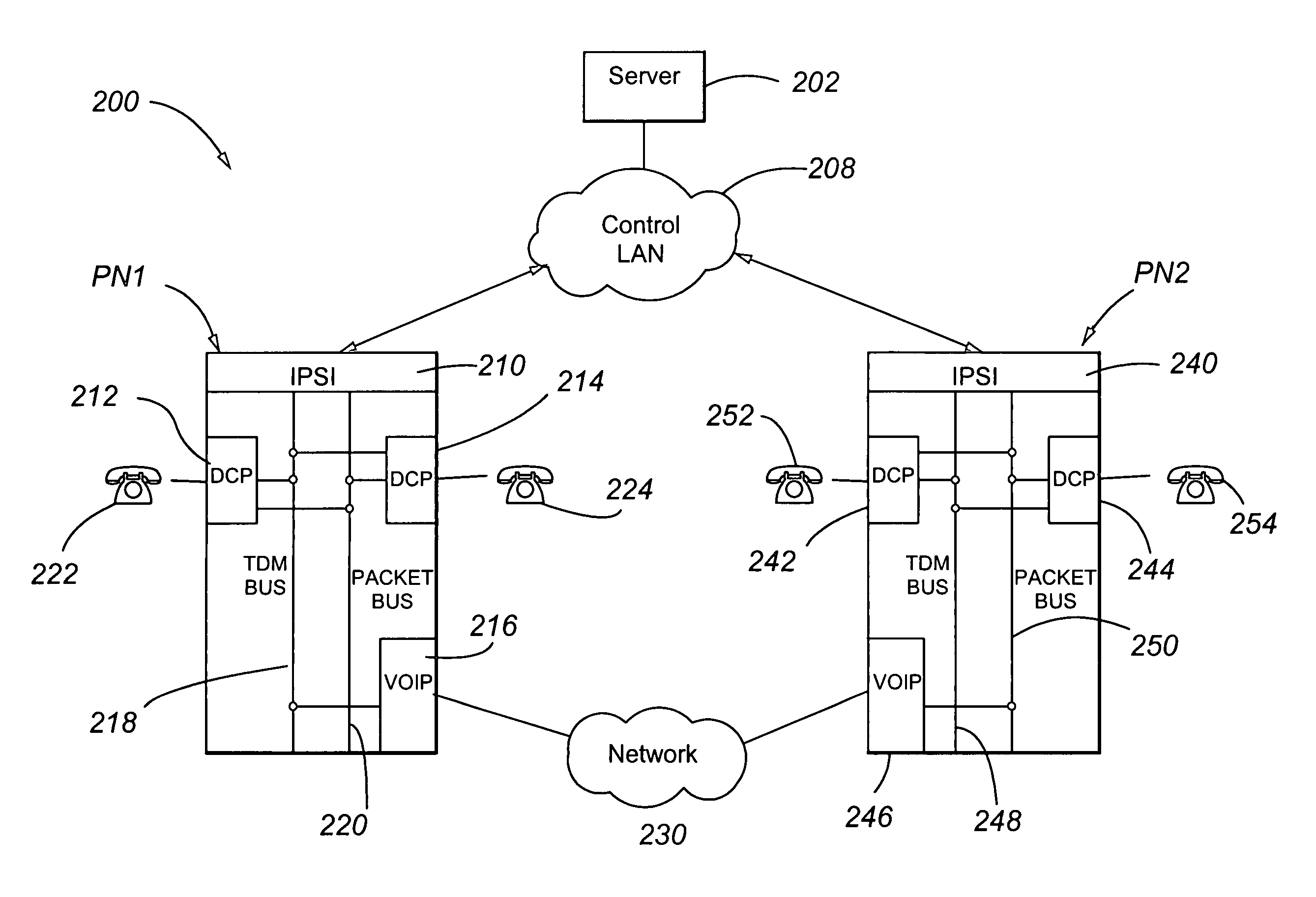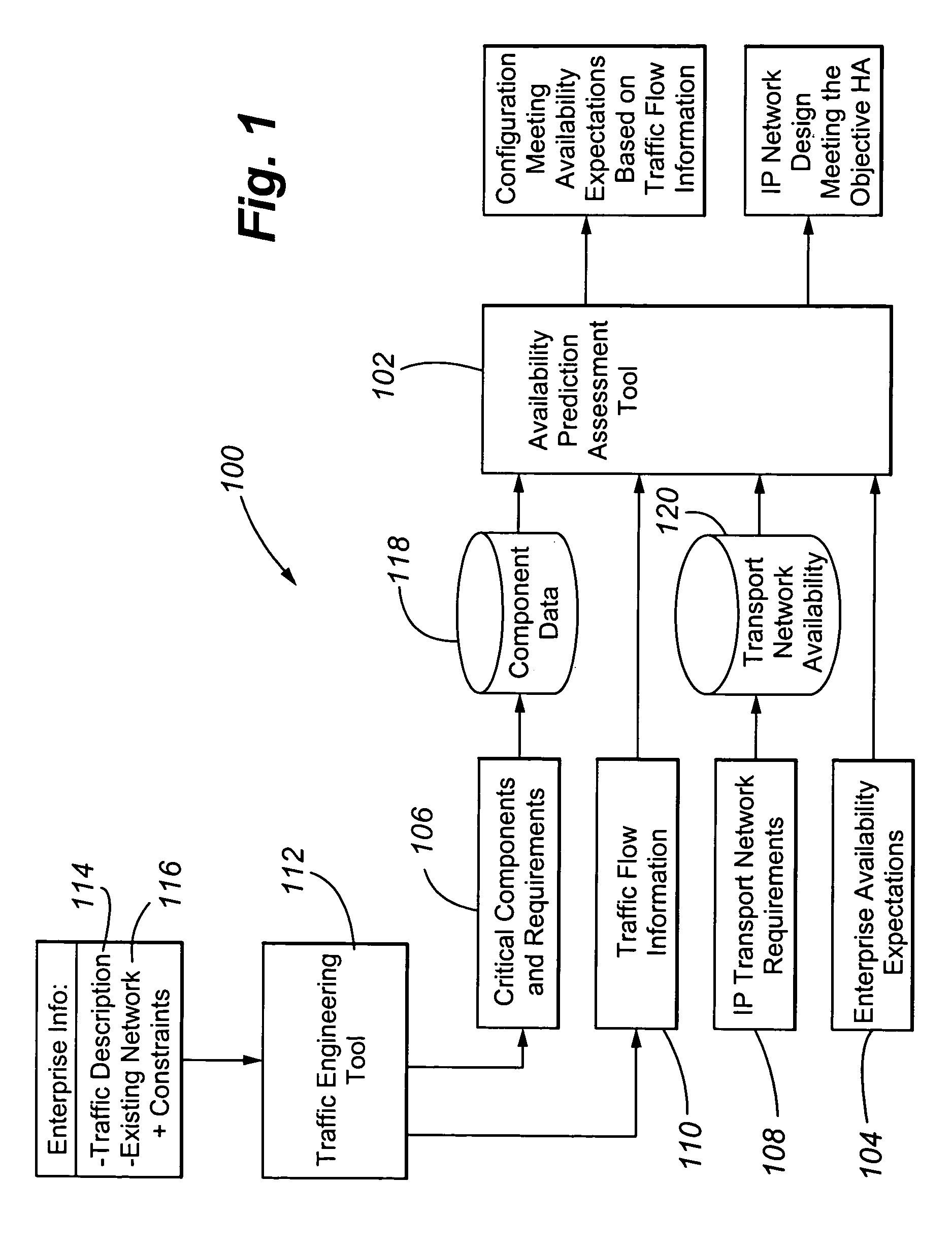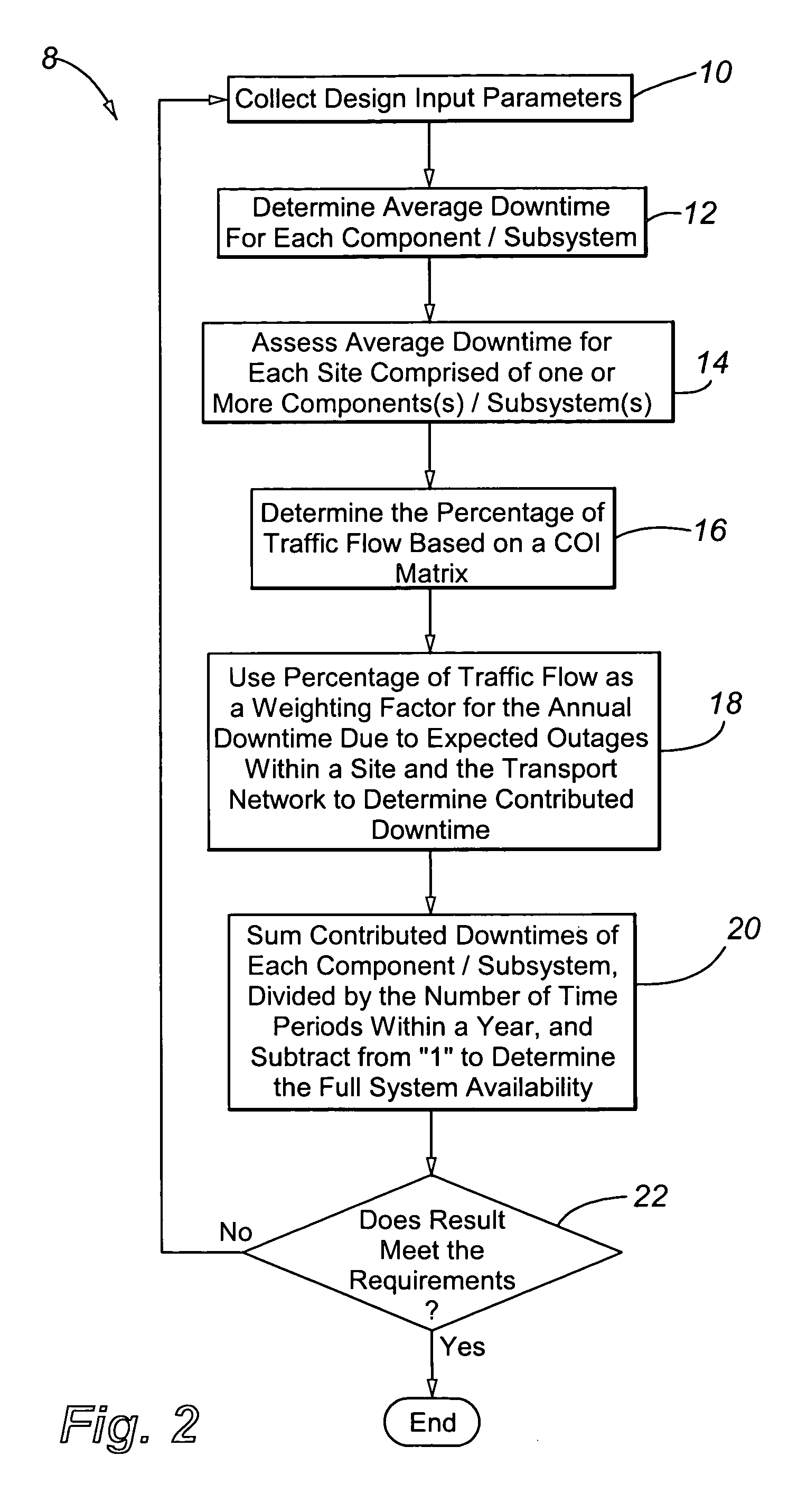Traffic based availability analysis
a traffic-based availability and analysis technology, applied in the field of telecommunications systems, can solve the problems of inability to predict system availability, inability to accurately assess the impact of network failures, and inability to accurately predict system availability, etc., to achieve the effect of reducing the burden, reducing the impact of failures on service interruptions, and accurate assessment of network impa
- Summary
- Abstract
- Description
- Claims
- Application Information
AI Technical Summary
Benefits of technology
Problems solved by technology
Method used
Image
Examples
example 1
[0071]FIG. 5 shows a first example of a telecommunications system 200 for which the availability may be predicted according to the present invention. In this example, the telecommunications system 200 comprises a server 202. The server 202 controls two port networks PN1 and PN2 through a Control Local Area Network (Control LAN) 208 and, in the example shown, includes an Avaya S8500_ Media Server, although other telecommunications servers may be used. The Control LAN 208 is connected to a first port network PN1 and a second port network PN2. In this example, the first and second port networks PN1 and PN2 each comprise an Avaya G650_ Port Network, and the traffic flow comprises (Digital Control Processor) DCP-DCP station-to-station traffic only. The first port network PN1 includes 240 DCP stations, and the second port network PN2 includes 480 DCP stations.
[0072]At the first site, a first port network PN1 includes an IP Server Interface (IPSI) card 210, a first DCP card 212, a second D...
example 2
[0093]FIG. 6 shows a first example of a geographically distributed network 300. As shown in FIG. 6, an Avaya S8700_ IP-Connect System has a pair of S8700 media servers 302 and 304, and a pair of port networks 306 and 308 (e.g., two Avaya G650 media gateways) connected by a LAN 310 located in a headquarters site 320 in Atlanta. The LAN 310 is further connected to a WAN router 312 connected to a WAN 314. The port networks 306 and 308 are connected to a public switching telephone network (PSTN) 316 and are further connected to one or more communities of local telephone(s) 318 located within the Atlanta headquarters site 320. In addition, one or more communities of local telephone(s) 322 are connected to the LAN 310. A branch office site 330 in Boston also includes a LAN 332 that is connected to the WAN 314 via a WAN router 334. The Boston site 330 further includes a port network 336 (e.g., an Avaya G650 media gateway) connected to the LAN 332 and one or more communities of local teleph...
case study i
[0096]In a first case study for the network 300 shown in FIG. 6, the call processing link from the S8700™ media servers 302 and 304 to the G650™ media gateways 306 and 308 in the Atlanta headquarters site 320 is supported by a single LAN connection 310. In addition, the call processing link from the servers to each of the branch offices is over a single WAN link 314. The quality of the Control LAN and media processor circuit packs or media modules are designed to support the calculated traffic load and have not been engineered with N+1 reliability.
[0097]The single WAN link is the weakest link in this configuration. Because WAN facilities are usually leased, and because of the cost-prohibitive nature of procuring WAN circuits, WAN availability has historically been in the range from 99% to 99.5%, although some service providers currently guarantee 99.9% availability per WAN circuit. The call control signaling traffic traverses the WAN link to give service to the phones in Boston and ...
PUM
 Login to View More
Login to View More Abstract
Description
Claims
Application Information
 Login to View More
Login to View More - R&D
- Intellectual Property
- Life Sciences
- Materials
- Tech Scout
- Unparalleled Data Quality
- Higher Quality Content
- 60% Fewer Hallucinations
Browse by: Latest US Patents, China's latest patents, Technical Efficacy Thesaurus, Application Domain, Technology Topic, Popular Technical Reports.
© 2025 PatSnap. All rights reserved.Legal|Privacy policy|Modern Slavery Act Transparency Statement|Sitemap|About US| Contact US: help@patsnap.com



